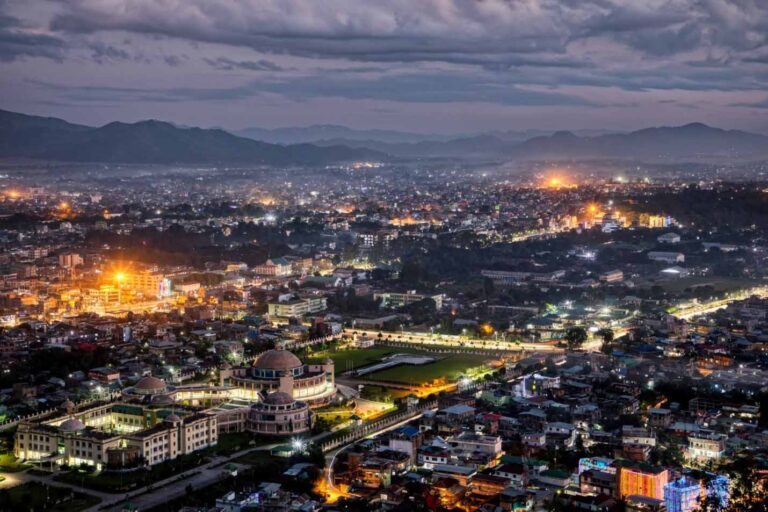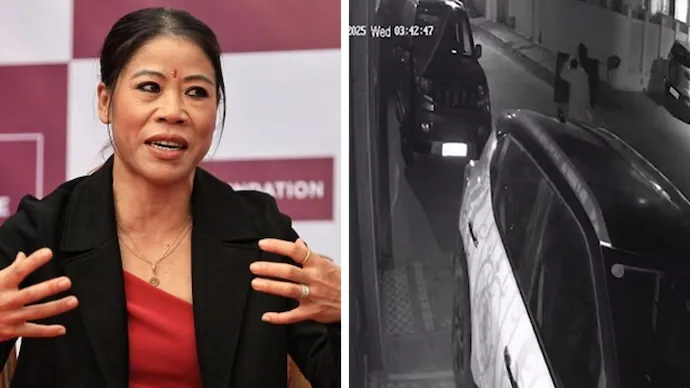Over 5,000 Refugees Return to Myanmar from Manipur
Recent reports confirm that around 5,000 Myanmar refugees who had sought shelter in Manipur’s Kamjong district have returned to their homeland, amid improving conditions in Myanmar following the upheaval caused by the February 2021 military coup Originally, over 7,000 individuals took refuge across remote border villages. Indian authorities registered biometric data for more than 6,000 of them and issued humanitarian identity cards, providing shelter, food, and essential supplies Around 2,000 refugees remain in camps, with some commuting daily across the border for agricultural work District administrators, alongside Assam Rifles and Manipur Police, continue to monitor the situation
Introduction
Imagine carrying your entire life in a few plastic bags, trudging through forests under cover of night, crossing borders to escape violence—that’s the journey many Myanmar refugees undertook when fleeing conflict. Now, they’re heading home. This story isn’t just about numbers; it’s about resilience, geopolitics, and the fragile balance of humanitarian care.
1. The Backdrop: Coup, Crisis, and Flight
- Military Coup, February 2021
Myanmar plunged into crisis when the military overthrew its civilian government. The aftermath brought aerial bombardments, arson, and widespread displacement—particularly in the Sagaing and Chin regions - Crossing into Manipur
Among nearby Indian states, Manipur bore the brunt of the refugee influx. Border villages like Namlee, Wanglee, Kenching, and others in the Kasom Khullen subdivision provided shelter to those fleeing the turmoil
2. The Refugee Population: An Overview
- Numbers
Over 7,000 refugees arrived in border camps, with biometric data recorded for approximately 6,000 (excluding young children) - Identity on Paper
Although India hasn’t ratified global refugee treaties, humanitarian ID cards were issued. Along with food, utensils, tarpaulins, and shelter made from local officials, Manipur extended a safety net
3. Return of the Refugees: Why Now?
- Improving Situation Back Home
Reports suggest stabilization in parts of Myanmar, enough for approximately 5,000 refugees to feel safe returning - Continued Migration Patterns
Some of those still in Manipur are farming their own land in Myanmar during the day and sleeping in Indian camps at night—showing hybrid survival strategies
4. Remaining Refugees: Camps and Livelihoods
- Around 2,000 Refugees Left
These individuals, many of whom continue cross-border commutes, remain committed to maintaining a livelihood from both homes. - Support Systems
District authorities, Assam Rifles, and the Manipur Police remain engaged in registration drives and supplies distribution
5. Regional Dynamics: Beyond Humanitarian Need
- Ethnic Tensions in Manipur
The refugee influx intersects with local ethnic strain between Meitei and Kuki communities, feeding fear and political unrest - Impact of Myanmar Conflict
India’s northeast has experienced spillover from Myanmar’s civil war: trafficked arms, insurgents, and explosive violence affect local security
6. Humanitarian Framework: India’s Role
- No International Treaty, But Practical Steps
India doesn’t formally recognize refugees under the 1951 Geneva Convention but still extends basic humanitarian aid—a pragmatic and compassionate choice - Identity Cards and Biometric Records
Collected for more than 6,000 individuals (excluding children), these records aid monitoring and distribute elements of formal aid while balancing the fine line between security and privacy
7. Challenges Ahead: Reintegration, Security, and Sustainability
- Rebuilding Homes
Returned refugees may face their homes razed by conflict—reconstruction will be slow and deeply challenging - Legal and Safety Issues
Tensions remain: some refugees risk being labeled “illegal immigrants,” and forced repatriation nearly happened, driven by fears of exacerbated conflict - Border Security Tightening
India is fencing parts of the border and preparing for stricter migration control to manage security and demographic balance
8. What Comes Next? Recommendations
- Support for Rebuild
NGOs and governments must mobilize resources—housing, seeds, tools, and mental health services—to ensure sustainable reintegration. - Balance Security with Rights
Monitoring systems like biometric registration should respect human rights and avoid stigmatization. - Community Engagement
Bridge-building efforts between locals in Manipur and returning families can defuse tension and promote stability. - Regional Goodwill
Coordination between India and Myanmar, along with international actors, could ease the transition and strengthen mutual trust.
Conclusion: A Fragile Transition
This isn’t just about numbers—it’s a mosaic of displaced lives, changing political winds, and humanitarian concerns. The return of these 5,000 individuals signals hope, but the journey ahead is large. Proper care, dialogue, and foresight now might prevent another humanitarian crisis tomorrow.
Frequently Asked Questions (FAQs)
- Why did so many refugees leave Myanmar?
Major human rights violations—airstrikes, forced displacement, and military reprisals—drove thousands to cross into India, notably into Manipur and Mizoram - How were refugees tracked and supported in Manipur?
Manipur authorities recorded biometric data for over 6,000 people (excluding young children), issued identity cards, and distributed food, utensils, tarps, and shelter aid - Why did many refugees choose to return?
Situational improvements in Myanmar and socio-economic pressures in camps—along with plans for orderly repatriation—drove the return of about 5,000 refugees . - What challenges might returnees face?
Many homes were destroyed during the conflict. Rebuilding, restoring livelihoods, and psychological recovery will all be formidable challenges . - Will border and security concerns affect future flows?
India is strengthening border controls, including fencing and legal scrutiny—cautioning future spillover. Still, immediate humanitarian needs remain a priority .





